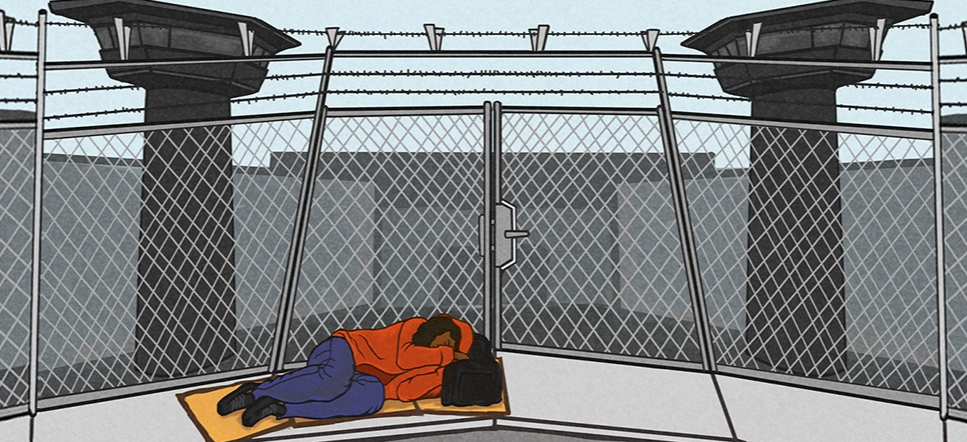Homelessness and the Incarceration Cycle
Formerly incarcerated people are 10 times more likely to experience homelessness than the general population.

Each year approximately 700,000 individuals return home from state prisons in the United States and an additional nine million are released from county jails. More than 10% of those coming in and out of prisons and jails are homeless in the months preceding and following their incarceration. Being homeless, unstably housed, or living in a high crime neighborhood all heighten an individual’s risk of reoffending.
Among ex-offenders, those with mental illness have higher than average rates of homelessness and housing insecurity. Homelessness is not just a public safety issue but also a public health issue. For example, New Jersey has successfully reduced its state prison population by nearly 37% since 1999, in large part by creating alternatives to incarceration and providing community-based reentry and treatment services. Yet with this successful blueprint to serve as an example, the rationing of social services to ex-offenders has had a negative effect on successful prisoner reentry in the vast majority of states and cities, further illustrating how these ineffective policies fail to promote public safety. Collateral sanctions such as ineligibility for social entitlements or community notification, compounded by the increased trend of ex-offenders leaving prison without supervision, increase housing instability.
Stable housing is a crucial foundation for formerly incarcerated individuals to be able to reunite with their families, access and receive necessary health care and treatment, and secure employment; all factors that promote successful reentry and reduce recidivism risk. Yet, formerly incarcerated people make up between 23.1-47.8% of annual homeless shelter admissions, and are 10 times more likely to experience homelessness than the general population.
- People who have been incarcerated more than once are 13x more likely to be homeless than the general public.
- People who have been out of prison for two years or less are over twice as likely to be homeless as those who have been living in the community for four years or longer.
- Formerly incarcerated women are more likely to be homeless than formerly incarcerated men (i.e., 264 per 10,000 women vs. 195 per 10,000 men)
- Among formerly incarcerated people experiencing homelessness, men are less likely to be sheltered than women (i.e., 90 per 10,000 men vs. 156 per 10,000 women)
- Formerly incarcerated Black men experience unsheltered homelessness at a rate greater than formerly incarcerated Hispanic or White men (124 per 10,000 Black men vs. 82 per 10,000 Hispanic men & 81 per 10,000 White men)
- Formerly incarcerated Black women experience sheltered homelessness at a rate 4x that of White men and 2x that of Black men (203 vs. 56 and 108 per 10,000, respectively)
- Incarceration during adolescence or from age 18-23 predicts a younger age of initial homelessness (i.e., 9.8 years or 5.1 years earlier, respectively)
A number of legal and regulatory barriers restrict formerly incarcerated people from accessing public housing and federally-assisted housing, though many of these restrictions apply to individuals with a wider range of criminal legal system involvement. US Congress also grants public housing authorities and federally-assisted housing owners the authority to deny admission to applicants with criminal histories, and with broad discretion, public housing authorities and project owners often supplement federal policies with additional screening criteria and eviction policies.
Yet, considering all this, the US Supreme Court's Johnson v. Grants Pass decision just made it even more likely that homelessness will continue to heavily contribute to the incarceration cycle.
Is the cruelty the point?










